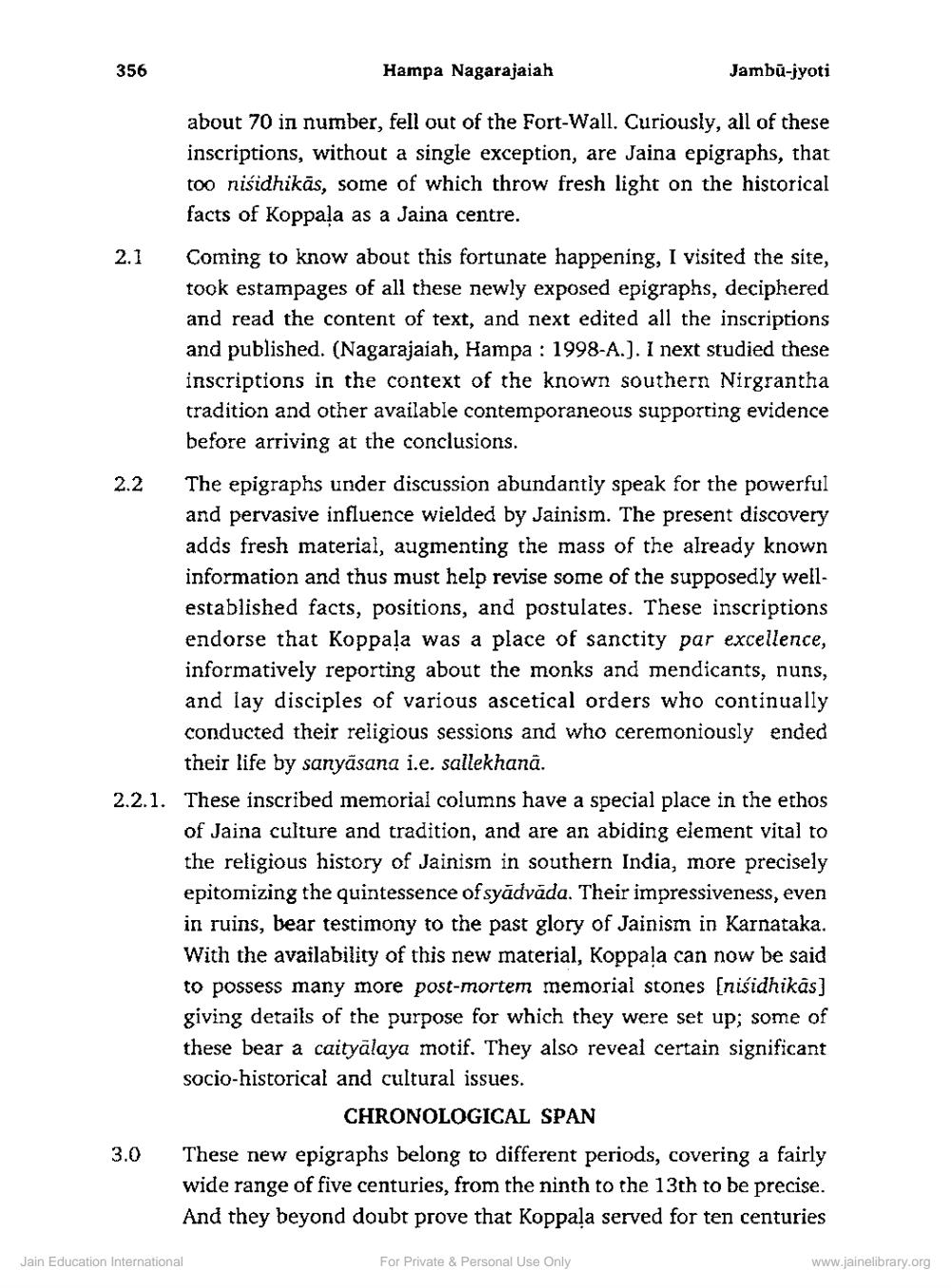Book Title: Significance of New Inscriptions from Koppala Karnataka Author(s): Hampa Nagrajaiha Publisher: Z_Nirgranth_Aetihasik_Lekh_Samucchay_Part_1_002105.pdf and Nirgranth_Aetihasik_Lekh_Samucchay_Part_2 View full book textPage 3
________________ 356 Hampa Nagarajaiah Jambū-jyoti about 70 in number, fell out of the Fort-Wall. Curiously, all of these inscriptions, without a single exception, are Jaina epigraphs, that too nisidhikäs, some of which throw fresh light on the historical facts of Koppala as a Jaina centre. 2.1 Coming to know about this fortunate happening, I visited the site, took estampages of all these newly exposed epigraphs, deciphered and read the content of text, and next edited all the inscriptions and published. (Nagarajaiah, Hampa : 1998-A.). I next studied these inscriptions in the context of the known southern Nirgrantha tradition and other available contemporaneous supporting evidence before arriving at the conclusions. 2.2 The epigraphs under discussion abundantly speak for the powerful and pervasive influence wielded by Jainism. The present discovery adds fresh material, augmenting the mass of the already known information and thus must help revise some of the supposedly wellestablished facts, positions, and postulates. These inscriptions endorse that Koppala was a place of sanctity par excellence, informatively reporting about the monks and mendicants, nuns, and lay disciples of various ascetical orders who continually conducted their religious sessions and who ceremoniously ended their life by sanyasana i.e. sallekhanā. 2.2.1. These inscribed memorial columns have a special place in the ethos of Jaina culture and tradition, and are an abiding element vital to the religious history of Jainism in southern India, more precisely epitomizing the quintessence of syadvada. Their impressiveness, even in ruins, bear testimony to the past glory of Jainism in Karnataka. With the availability of this new material, Koppala can now be said to possess many more post-mortem memorial stones (nisidhikas] giving details of the purpose for which they were set up; some of these bear a caityalaya motif. They also reveal certain significant socio-historical and cultural issues. CHRONOLOGICAL SPAN 3.0 These new epigraphs belong to different periods, covering a fairly wide range of five centuries, from the ninth to the 13th to be precise. And they beyond doubt prove that Koppala served for ten centuries Jain Education International For Private & Personal Use Only www.jainelibrary.orgPage Navigation
1 2 3 4 5 6 7 8 9 10 11 12 13 14 15 16 17 18 19 20
